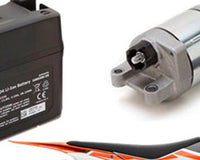You know what they say, behind every battery is a good charger. Okay maybe it’s just us who say that, but it’s still true.
A lot of the time, when people are in the process of buying a battery, they forget about the importance of buying a high-quality charger to go with it. Chargers are normally an afterthought, but they really shouldn't be.

Simple Chargers – A simple charger is one that provides a consent DC or pulsed DC power source the battery that it is charging.
Fast Chargers – These things can rapidly charge a battery without damaging the cells. They often include a cooling fan, and the control circuitry can be built into the battery or the external charging unit.
Three Stage Chargers – This charger applies a three-stage charging scheme, these stages are; Bulk absorption,
Induction powered chargers – Where electromagnetic energy is sent through inductive coupling to an electrical device, which stores the energy in the batteries. This is achieved without the need for metal contacts between the charger and the battery.
Smart chargers – also known as an Intelligent charger, is used to communicate with a smart battery about characteristics and conditions, so it can respond and modify its charging actions accordingly.
Motion Powered charger –a device that charges batteries based on human movements. An example of this is a torch that charges its own battery as the device is moved up and down.
Solar charger – A small solar panel that charges a battery using sunlight. They can also often find built into solar garden lights and wireless computer keyboards. They can also work in low light conditions as well.
Timer Chargers – A charger that automatically charges based on a pre-determined time.
Trickle chargers– a low current charger that is used to charge small capacity batteries and maintain large capacity batteries. They provide a maintenance (or ‘trickle”) current and can often be connected indefinitely.

Firstly, you need to determine what time of battery you have: it may be an AGM, VRLA, Flooded (wet cell) or gel battery. Or it might be a Lithium battery.
Make sure you're choosing a charger with the correct chemistry for the battery it is being used for. Most charges are specifically designed for specific chemistries. Don't use a NiMH charger for a NiCad battery .
The more amps your charger has, the faster it’ll charge your battery. You must determine how many amp hours your battery can store. The amp hour of your battery you buy will determine how long it takes to charge. A 50 AH battery will take roughly 6 hours to recharge from 0% SoC with a 10 Amp charger.
You need to consider the application the battery is used in. If you aren’t using the application for long time periods and charge it during that time (e.g. charging hour jet ski during Winter), a low current charger should do that trick.
But if you have an application that is using the battery all the time, and needs to be recharged regularly, you’ll want to invest, in which case you’ll need a charger that’s powerful and fast.









